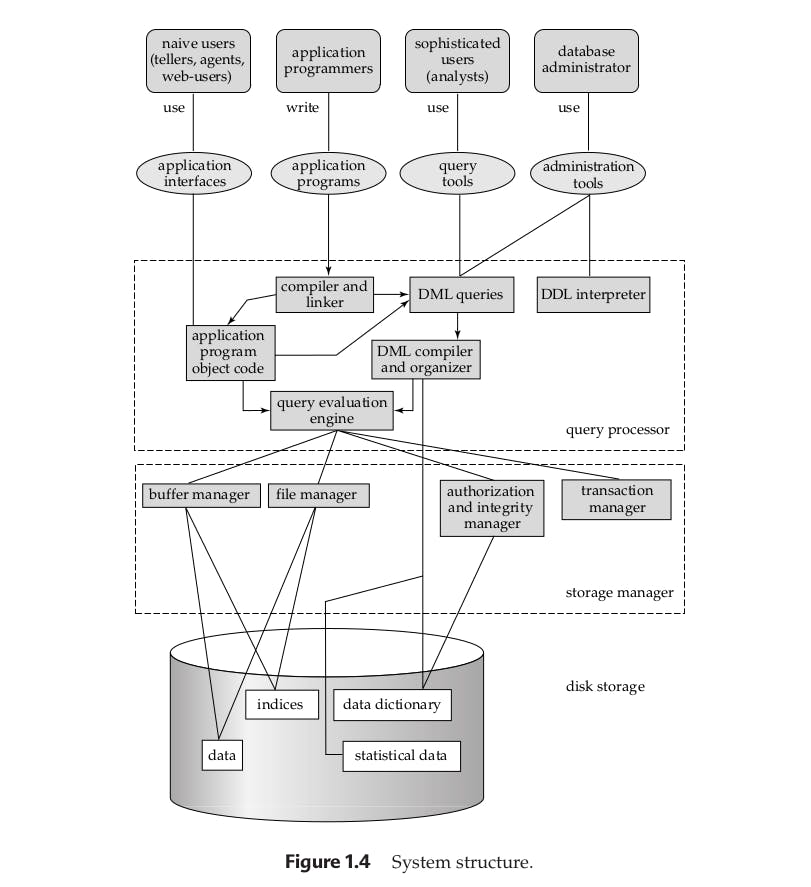If you are here, I am assuming that you have a little bit of knowledge of what is a database and some kinds of stuff and If not then feel free to learn it on my Blog in an Easy way.
Let's Take a Look at the Original Diagram of the Database System.

From the diagram, we can see there are many scary-looking things but these are just outside. You will get a pretty good hold of this structure at the end.
First Concept
Types of Users
Naive Users - Naive users are those users who don't know how to right the database, they just want to use the database for their own work. For example, Agents at the railway station only knows how to book the ticket with the application and they don't know how it is written. Naive users use only the application interface and you can relate it to the agent example I gave above.
Application Programmers - Application Programmer are those who writes application and use the database for the back-end purpose. Application Programmer writes the application programs
Sophisticated user - Sophisticated users are those users who don't write the program code but interact with database by writing SQL queries.
Database Administrator - A person who has the central control on the database is database administrator and have a all privilege all over the database.
Second Concept
The query processor components include
- DDL interpreter, which interprets DDL statements and records the definitions in the data dictionary.
- DML compiler, which translates DML statements in a query language into an
evaluation plan consisting of low-level instructions that the query evaluation
engine understands.
A query can usually be translated into any of a number of alternative eval-
uation plans that all give the same result. The DML compiler also performs
query optimization, that is, it picks the lowest cost evaluation plan from amo-
ng the alternatives.
- Query evaluation engine, which executes low-level instructions generated by the DML compiler.
Third Concept
A storage manager is a program module that provides the interface between the low- level data stored in the database and the application programs and queries submit- ted to the system. The storage manager is responsible for the interaction with the file manager.
- Authorization and integrity manager, which tests for the satisfaction of integrity constraints and checks the authority of users to access data.
- Transaction manager, which ensures that the database remains in a consistent (correct) state despite system failures, and that concurrent transaction executions proceed without conflicting.
- File manager, which manages the allocation of space on disk storage and the data structures used to represent information stored on disk.
- Buffer manager, which is responsible for fetching data from disk storage into main memory, and deciding what data to cache in main memory. The buffer manager is a critical part of the database system, since it enables the database to handle data sizes that are much larger than the size of main memory. The storage manager implements several data structures as part of the physical system implementation:
- Data files, which store the database itself.
- Data dictionary, which stores metadata about the structure of the database, in particular the schema of the database.
- Indices, which provide fast access to data items that hold particular values.
I hope by now, you have enough knowledge about database structures.
See in the next one. Bye, bye.

